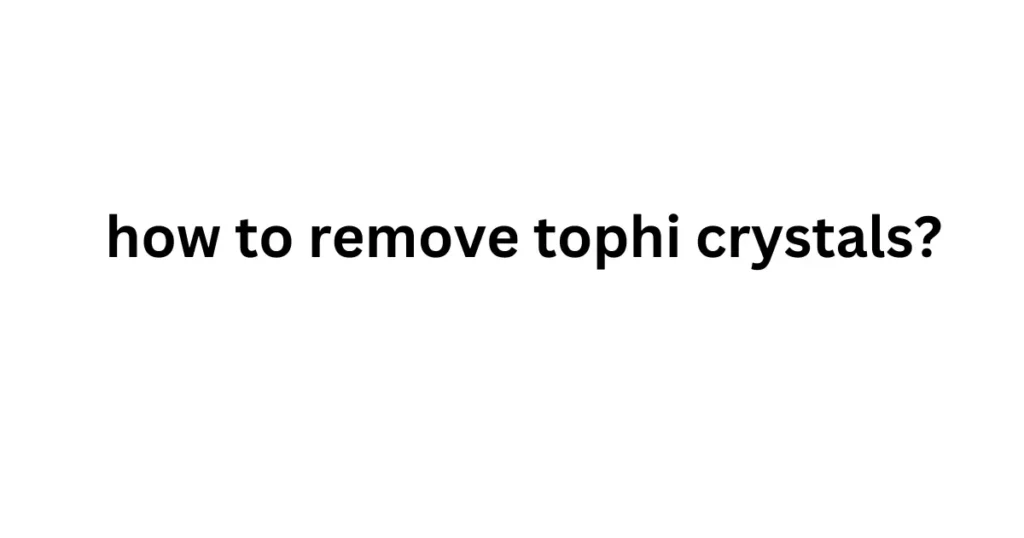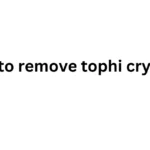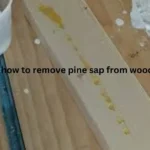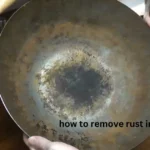Imagine tiny, hard crystals forming under your skin, causing pain and swelling. These are tophi, a common symptom of gout. Gout is a type of arthritis that happens when you have too much uric acid in your blood.
This uric acid can form needle-like crystals in your joints and the tissues around them, leading to painful inflammation and the development of tophi.
This article will guide you through everything you need to know about tophi crystals: what they are, why they form, how to get rid of them, and how to prevent them from coming back. We’ll explore different treatment options, lifestyle changes, and answer some frequently asked questions to help you better understand and manage gout.
Understanding Tophi Crystals
Tophi are hard lumps that form under your skin due to a buildup of uric acid crystals. They are often found around joints, especially in your toes, fingers, ankles, and elbows. Tophi can be as small as a grain of sand or grow as large as a golf ball. They can cause pain, stiffness, and even deformities in severe cases.
Why Do Tophi Crystals Form?
Tophi crystals form when you have high levels of uric acid in your blood for a long time. Uric acid is a waste product created when your body breaks down purines, which are found in certain foods and drinks. When your kidneys can’t get rid of enough uric acid, it can build up and form sharp crystals in your joints and tissues. This leads to inflammation and the development of tophi.
Several factors can contribute to high uric acid levels, including:
- Diet: Eating foods rich in purines, such as red meat, organ meats, seafood, and sugary drinks, can increase uric acid production.
- Genetics: You may be more likely to develop gout if you have a family history of the condition.
- Medical conditions: Certain health problems like kidney disease, high blood pressure, and diabetes can make it harder for your body to remove uric acid.
- Medications: Some medications, such as diuretics (water pills) and low-dose aspirin, can also increase uric acid levels.
How to Remove Tophi Crystals
Removing tophi crystals often involves a combination of medical treatments and lifestyle changes. The goal is to lower uric acid levels in your blood, reduce inflammation, and manage pain.
Medical Treatments for Tophi
Your doctor may recommend one or more of the following treatments to help remove tophi crystals:
- Medications to Lower Uric Acid:
- Xanthine oxidase inhibitors (XOIs): These medications, such as allopurinol and febuxostat, block the production of uric acid in your body.
- Uricosurics: These medications, such as probenecid, help your kidneys get rid of more uric acid.
- Medications to Reduce Inflammation and Pain:
- Nonsteroidal anti-inflammatory drugs (NSAIDs): Over-the-counter options like ibuprofen and naproxen, or prescription-strength NSAIDs, can help reduce pain and swelling.
- Colchicine: This medication specifically targets gout inflammation and can be helpful during acute attacks and for preventing future flares.
- Corticosteroids: These powerful anti-inflammatory drugs, such as prednisone, can be given orally or injected directly into the affected joint to quickly reduce inflammation.
- Surgery: In rare cases, when tophi are very large, cause significant pain or disability, or don’t respond to other treatments, surgery may be necessary to remove them.
| Medication Class | Examples | How They Work |
|---|---|---|
| Xanthine oxidase inhibitors (XOIs) | Allopurinol, Febuxostat | Block uric acid production |
| Uricosurics | Probenecid | Help kidneys remove uric acid |
| Nonsteroidal anti-inflammatory drugs (NSAIDs) | Ibuprofen, Naproxen | Reduce pain and inflammation |
| Colchicine | Colchicine | Targets gout inflammation |
| Corticosteroids | Prednisone | Powerful anti-inflammatory |
Lifestyle Changes to Help Remove Tophi
Making certain lifestyle changes can support medical treatments and help your body get rid of tophi crystals:
- Diet Modifications:
- Limit purine-rich foods: Reduce your intake of red meat, organ meats, seafood, and shellfish.
- Increase low-purine foods: Focus on fruits, vegetables, whole grains, and low-fat dairy products.
- Stay hydrated: Drink plenty of water to help your kidneys flush out uric acid.
- Limit alcohol: Alcohol can interfere with uric acid removal and worsen gout.
- Avoid sugary drinks: Fructose in sugary drinks can increase uric acid production.
- Weight Management: If you’re overweight or obese, losing even a small amount of weight can help lower uric acid levels and reduce stress on your joints.
- Regular Exercise: Engage in regular physical activity to maintain a healthy weight and improve joint function. Choose low-impact exercises like walking, swimming, or cycling.
| Lifestyle Change | Benefit |
|---|---|
| Limiting purine-rich foods | Reduces uric acid production |
| Increasing low-purine foods | Provides essential nutrients without raising uric acid levels |
| Staying hydrated | Helps kidneys remove uric acid |
| Limiting alcohol | Prevents interference with uric acid removal |
| Avoiding sugary drinks | Reduces uric acid production |
| Weight management | Lowers uric acid levels and reduces stress on joints |
| Regular exercise | Maintains healthy weight and improves joint function |
Preventing Tophi Crystals
Once you’ve successfully removed tophi crystals, it’s crucial to take steps to prevent them from coming back. This involves sticking to your treatment plan and maintaining healthy habits.
Long-Term Management of Gout
- Medication Adherence: It’s essential to take your medications as prescribed by your doctor, even if you’re feeling better. This will help keep your uric acid levels under control and prevent future gout flares.
- Regular Checkups: See your doctor regularly for monitoring and adjustments to your treatment plan as needed.
- Early Treatment of Flares: If you experience a gout flare, seek treatment promptly to prevent the formation of new tophi.
Lifestyle Changes for Prevention
Continue following the lifestyle recommendations mentioned earlier, including:
- Maintaining a healthy diet: Focus on a balanced diet low in purines and high in fruits, vegetables, and whole grains.
- Staying hydrated: Drink plenty of water throughout the day.
- Managing weight: Maintain a healthy weight through diet and exercise.
- Limiting alcohol: Reduce or avoid alcohol consumption.
- Avoiding sugary drinks: Opt for water, unsweetened tea, or other healthy beverages.
Conclusion
Tophi crystals are a painful reminder of the importance of managing gout effectively. By understanding the causes of tophi and following your doctor’s recommendations, you can take control of your condition.
Combining medical treatments with lifestyle changes, such as dietary modifications, regular exercise, and weight management, can help remove tophi crystals and prevent their recurrence. Remember that consistency is key to long-term success in managing gout and living a healthy, pain-free life.
FAQs
How long does it take to get rid of tophi crystals?
The time it takes to get rid of tophi crystals varies depending on their size, location, and your overall health. With proper treatment and lifestyle changes, it can take several months or even years for tophi to completely disappear.
Are tophi crystals permanent?
Tophi crystals are not always permanent. With consistent treatment and lifestyle changes, it’s possible to shrink and even eliminate them. However, if left untreated, they can cause joint damage and deformities.
Can I prevent tophi crystals from forming?
Yes, you can prevent tophi crystals by managing your uric acid levels. This involves following your doctor’s recommendations, taking medications as prescribed, and making healthy lifestyle choices.
Do tophi crystals go away with medication?
Medications can help lower uric acid levels and reduce inflammation, which can lead to the shrinking and disappearance of tophi crystals over time. However, lifestyle changes are also crucial for successful treatment.
What happens if tophi crystals are not treated?
If left untreated, tophi crystals can continue to grow and cause joint damage, pain, stiffness, and deformities. They can also increase your risk of other health problems, such as kidney stones and infections.






